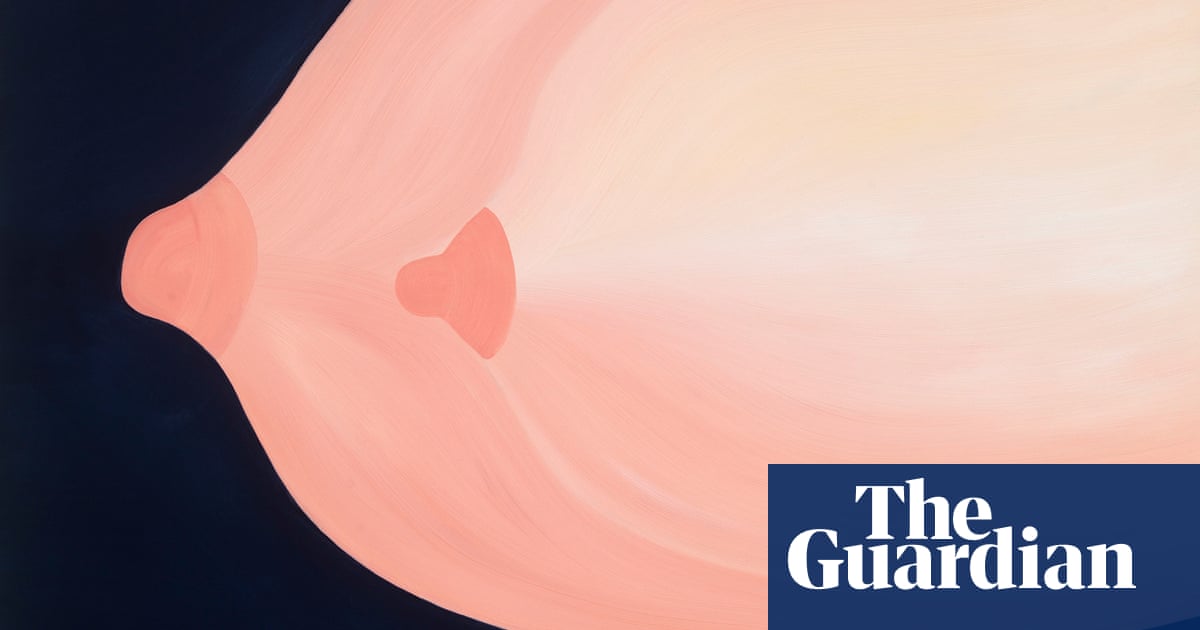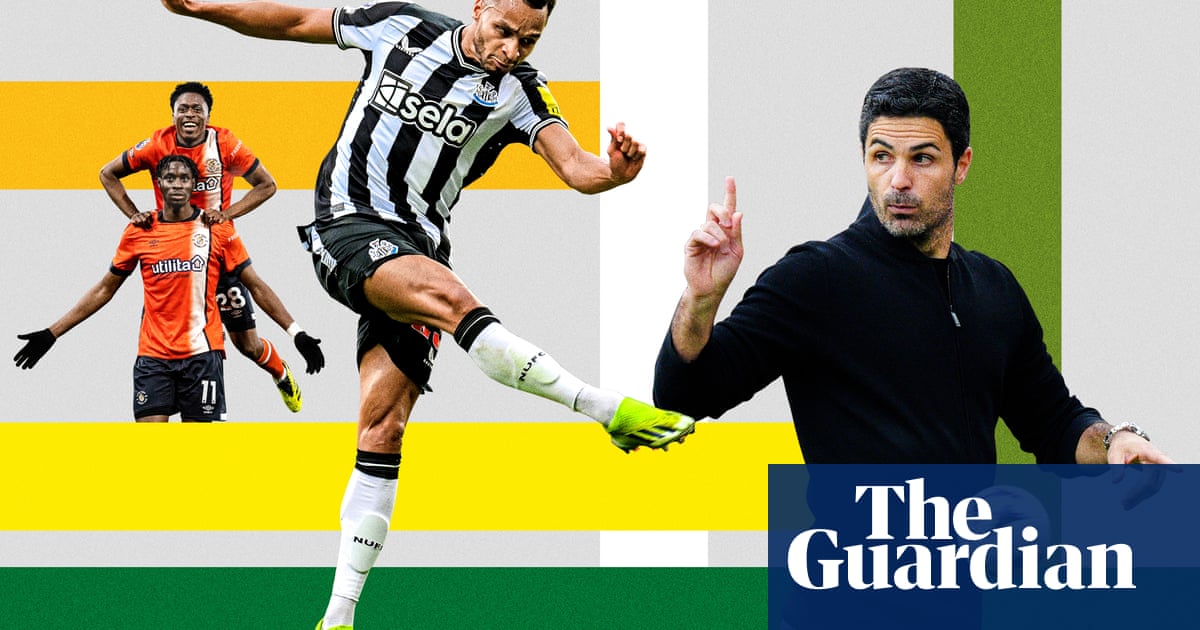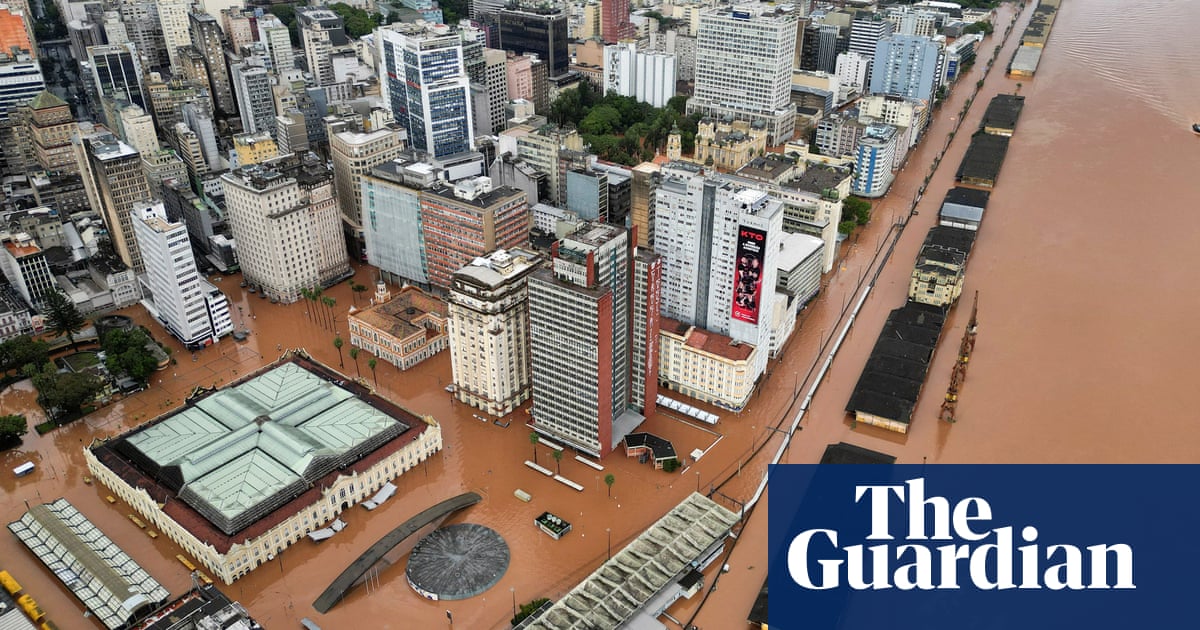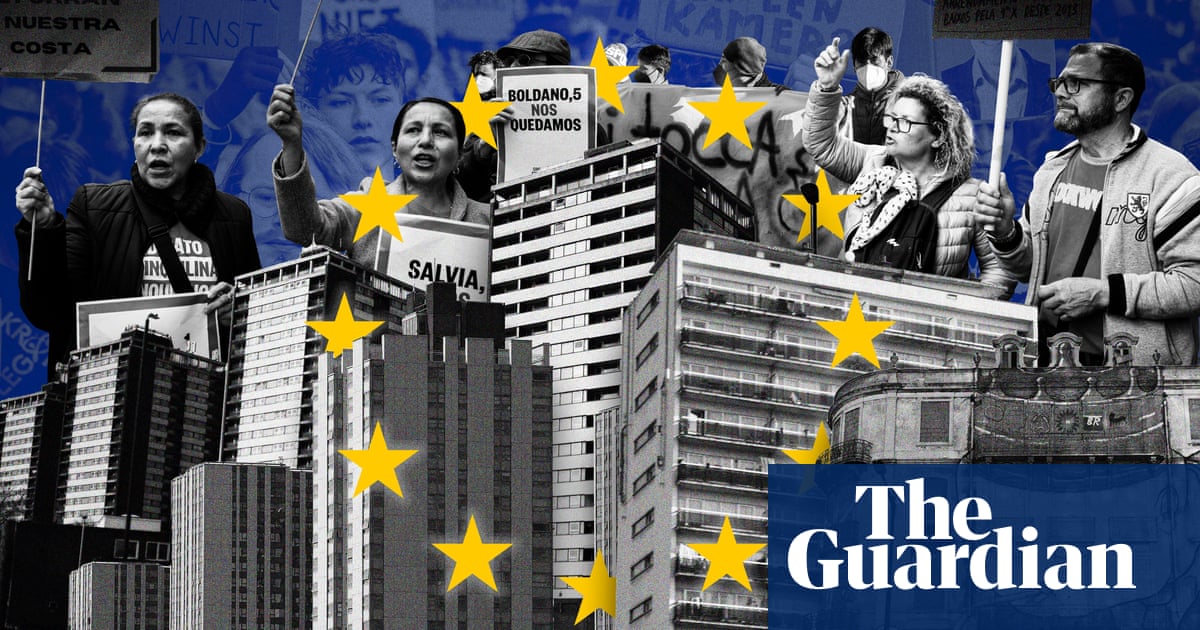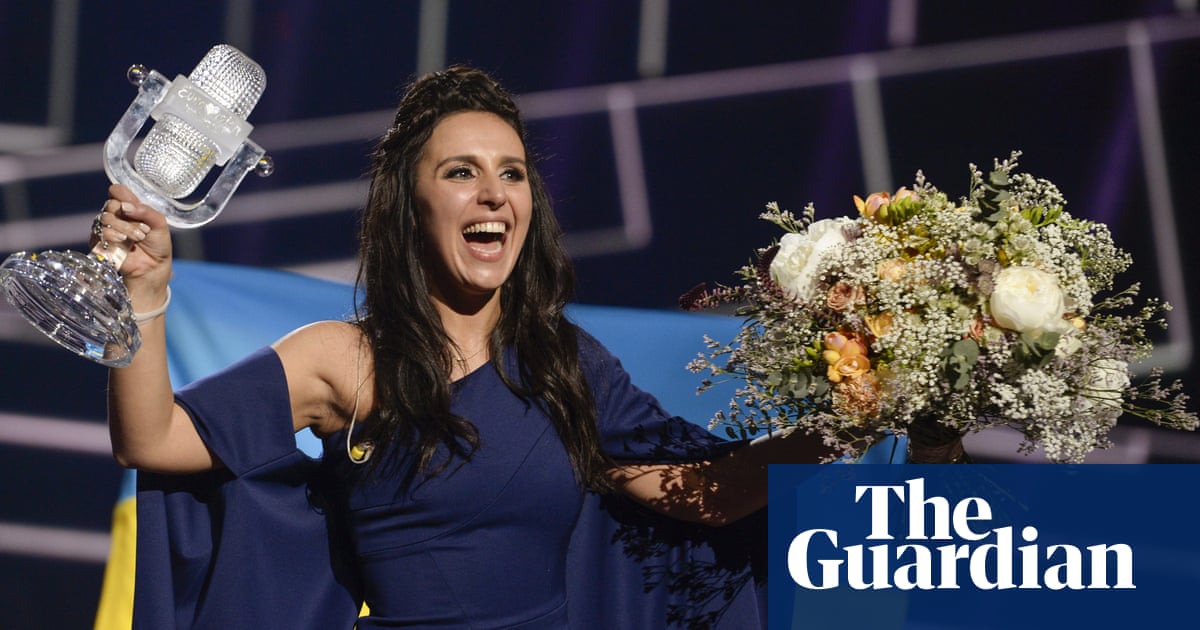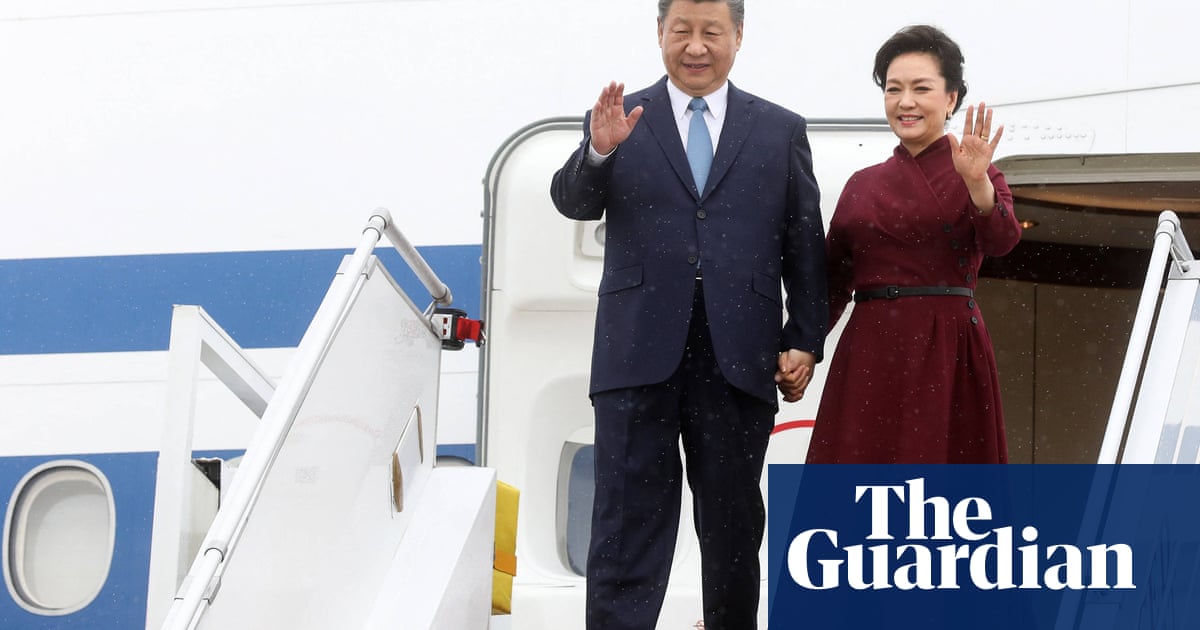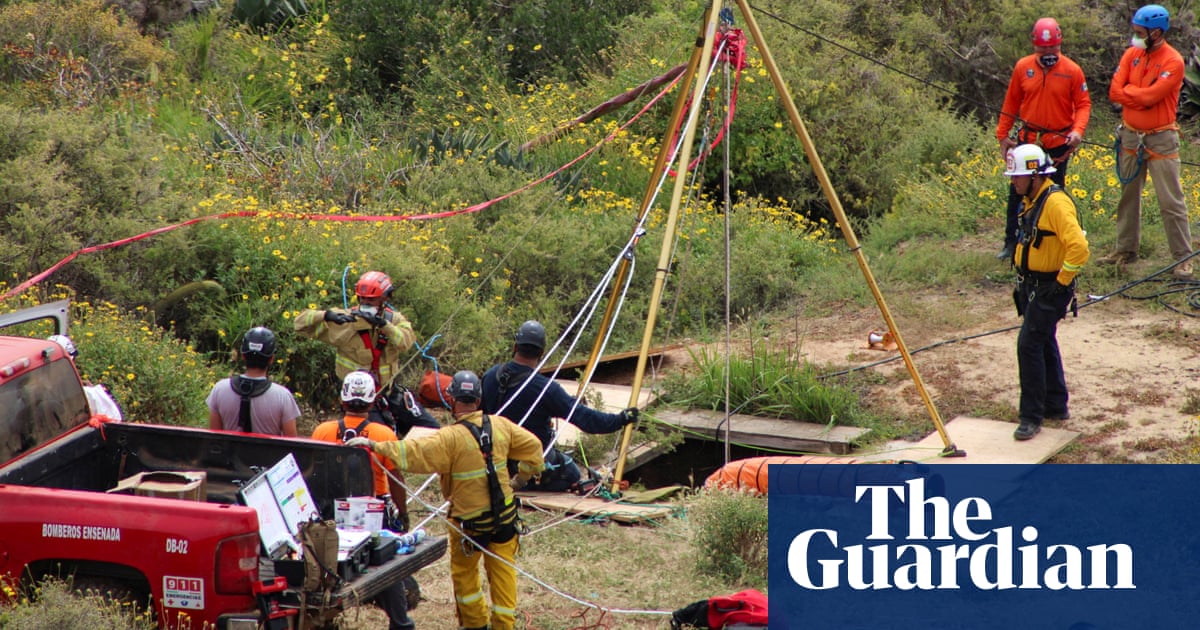There was a time, not so long ago, that Donald Trump did not seem to be very familiar with the Bible.
When he first ran for the nomination of the very Christian Republican party, Trump was unable to name a single Bible verse. Early in his 2016 presidential campaign he referred to the eucharist as a âlittle crackerâ. In a subsequent church visit, as he attempted to prove his religious credentials, he put cash in a plate that was meant to hold the communion.
How times have changed.
âAll Americans need a Bible in their home, and I have many. Itâs my favorite book,â Trump declared in March, in a video posted on Truth Social. âIâm proud to endorse and encourage you to get this Bible. We must make America pray again.â
In the video, Trump, who has a long history of endorsing and selling things, is clutching the God Bless the USA Bible â a âpatrioticâ take on the holy text that Trump is now hawking for $59.99.
âI want to have a lot of people have it,â Trump continued. âYou have to have it for your heart and for your soul.â
Well, who am I to defy a one-term, twice-impeached, former president who is currently on trial over hush-money payments to a porn star. I bought it.
Buying something from Donald Trump is fraught with danger. Trump is known for not following through on business agreements: in the run-up to the 2016 election, literally hundreds of people, including lawyers, carpenters and painters, came forward to accuse Trump of not paying them for their work.
Happily the Bible, which cost $83.37 after tax and shipping, eventually arrived. I eagerly tore open the packaging, held the bag upside down, and out plopped what is essentially a Christian nationalistâs fantasy: a Bible that is all American flags and bald eagles, with founding documents and lyrics to a patriotic anthem slotted in alongside the holy text.
The front of the Bible has an embossed USA flag. In the back are glossy pages bearing some of Americaâs most sacred documents: the Declaration of Independence; the Pledge of Allegiance; and the lyrics to Lee Greenwoodâs God Bless the USA, a song which is played on repeat at Trumpâs political rallies.
These pages are illustrated with the American flag and some of the countryâs best-regarded things: the bald eagle, yes, but also the Statue of Liberty, what appears to be a musket, and the Capitol building, which somewhat ironically was attacked by supporters of Trump three years ago.
One of the more intriguing questions in the FAQ section of the Trump bible website asks: âWhat if my Bible has sticky pages?â
My Bible did indeed have sticky pages. But no bother: the FAQ guidance explains that sticky pages are a common problem with new bibles, and directs the reader to âa YouTube video that does a wonderful job of explaining how to break your new Bible inâ.
That video is six minutes long. It shows a man unboxing what is objectively a better-looking Bible than the God Bless the USA version, then flipping through the entire book, page by page. âSeparating the pages is a somewhat tedious process,â the man says.
He was right. The Trump Bible, which uses public domain text from the King James version, has 1,350 thin-to-the-point-of-translucent pages, and I wasnât about to go through the entire thing. But all the good stuff appears to be in here: thereâs Noah desperately bundling animals onto a big boat, Job having his life ruined because of what amounts to a wager between god and the devil, and the book of Leviticus â much of which is given over to the correct way to sacrifice animals. (For a bullock, sprinkle its blood round the altar and wash its innards before setting it on fire; if youâre offering up a pigeon, be sure to wring off its head before plucking.)
You donât have to pay $59.99 for that kind of content. Search âfree Bibleâ online and there are hundreds of places that are literally giving it away. But this Trump-endorsed Bible represents something special to his supporters, said Kristin Du Mez, a professor at Calvin University whose research focuses on the intersection of gender, religion and politics.
âMy sense is, most people arenât buying this Bible to read it,â Du Mez said. âTheyâre buying the Bible to have it, and to participate in this kind of shared identity. To put $60 down to say: âYes, this is my guy and and Iâm committed to this, and this is my faith.ââ
The shared identity is one of embracing the âmyth of Christian Americaâ, Du Mez said: âThe idea that America was founded as a distinctly Christian nation: a proto conservative, white evangelical version of the country, which never really existed. Itâs that shared vision of a mythical past, and commitment to restoring some semblance of that kind of mythical order in the present.â
after newsletter promotion
After those early fumbles as he attempted to appeal to Christians, Trump was ultimately embraced by the evangelicals who make up much of the GOP â the same GOP taking a hatchet to church-state separation. In fact, the former presidentâs relationship with the religious right has now deepened to the extent that Trump is comfortable with comparing himself to their messiah.
Further cementing that bond goes some way towards explaining Trumpâs decision to promote the God Bless the USA bible. But thereâs also the financial aspect.
Trump owes more than $500m as a result of civil court convictions. He has been charged with more than 90 felony crimes, in five different jurisdictions, and lawyers cost money (unless you donât pay them).
While the God Bless the USA Bible website says that the Bible is ânot owned, managed or controlled by Donald J Trumpâ, it adds that the venture âuses Donald J Trumpâs name, likeness and image under paid license from CIC Ventures LLCâ.
Trump, according to a financial disclosure report filed last year, is the manager, president, secretary and treasurer of CIC Ventures LLC.
Happy days for Trump then. Although this Bible wheeze has not gone down well with everyone.
âBlasphemousâ and âdisgustingâ, was the verdict of pastor Loran Livingston, a conservative evangelical who leads the Central church in North Carolina. A pastor in South Carolina said the Bible was a âcommandment violationâ, while Raphael Warnock, the Democratic Georgia senator and a pastor himself, also wasnât happy.
âThe Bible does not need Donald Trumpâs endorsement,â Warnock told CNN.
âAnd Jesus in the very last week of his life chased the money changers out of the temple, those who would take sacred things and use them as cheap relics to be sold in the marketplace.â
It is unclear how many of these âcheap relicsâ have been sold. As of early May, God Bless the USA Bibles were still available for sale online â unlike the Trump-licensed sneakers that he was hawking earlier this year.
After the failure of Trump Steaks, Trump Vodka, Trump Mortgage, Trump Magazine, various Trump casinos and the Trump board game, perhaps the former president has finally given his name to a winning product. At $59.99 a pop for what is, objectively, quite a poorly printed, rather sticky book, the God Bless the USA Bible looks like a fairly safe bet. Maybe those lawyers will get paid after all.

